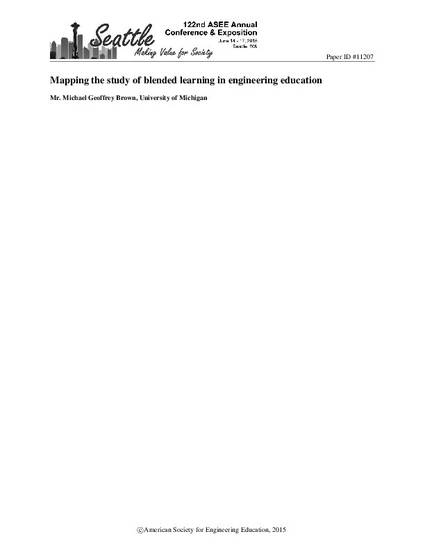
Presentation
Mapping the study of blended learning in engineering education
122nd ASEE Annual Conference & Exposition: Making Value for Society
(2015)
Abstract
In the last decade, an increasing number of higher education institutions are turning to
models of course delivery that combine the efficiency of Internet-enabled communication
and the socialization benefits of face to face instruction; what the literature would term
blended learning1. Engineering educators have embraced blended learning as a way to
flip the classroom2. A recent survey by the Higher Education Research Institute of
undergraduate faculty suggests that about half of respondents were using online tools in
their course in some way 3. A meta-analysis of studies on undergraduate student learning
with technology reported that, on average, students in blended courses demonstrate more
learning gains when compared to traditional residential instruction4. Blended models are
so pervasive that academic developers have started to characterize blending as the new
traditional5 of course delivery6,7.
Disciplines
Publication Date
2015
Location
Seattle, Washington
Comments
This paper is from the ASEE Annual Conference & Exposition Proceedings, June 14-17, 2015. © American Society for Engineering Education. Posted with permission.
Citation Information
Michael Geoffrey Brown. "Mapping the study of blended learning in engineering education" 122nd ASEE Annual Conference & Exposition: Making Value for Society (2015) Available at: http://works.bepress.com/brown-michael/2/
